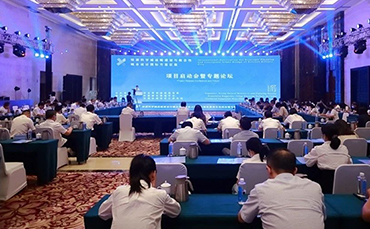


Introduction
International planning consultations have become a vital pathway for cities across China to integrate global expertise, adopt cutting-edge planning concepts, and enhance the scientific rigor, foresight, and feasibility of urban development strategies. During China’s urban transition phase, the Urban Planning Society of China (UPSC) has pioneered innovative, professional, and inclusive approaches to organizing consultations, driving high-quality urban development.
Currently, China’s urban planning industry is striving to achieve Five Key Shifts:
1. From "Spatial Blueprints" to "Spatial Governance"
2. From "Scale-Driven Growth" to "Value-Centric Development"
3. From "Technical Tools" to "Public Policy Integration"
4. From "Government-Led" to "Multi-Stakeholder Collaboration"
5. From "Sector-Specific Excellence" to "Holistic Synergy"
These shifts demand continuous innovation from urban planners to address evolving challenges.
Recent years have seen advancements in design philosophies, smarter tools, diversified methodologies, and flexible implementation strategies. UPSC has further refined its international consultation frameworks, emphasizing openness, diversity, and professionalism to support urban transformation.
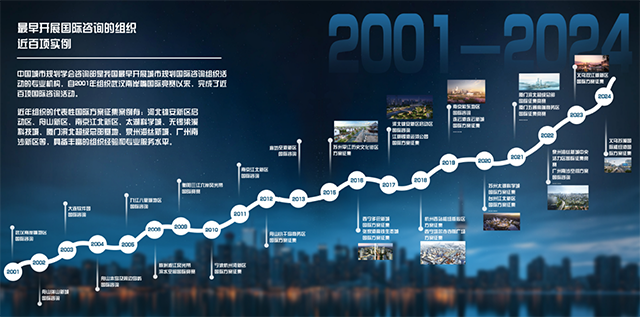
UPSC has been engaged in international planning consultation for over two decades
1. Expert-Driven Quality Assurance
UPSC leverages its network of leading experts nationwide to ensure high-quality outcomes. From drafting project briefs to selecting design teams and evaluating proposals, multidisciplinary experts provide comprehensive guidance tailored to project needs.
Case Study: Peiyuan Science City (Yixing, Jiangsu)
The Yangtze River Delta region, as an economically developed area with abundant scientific and educational resources in China, has taken the lead in exploring innovation-driven development. For example, prior to the international consultation for the Peiyuan Science City in Yixing, the Sci-Tech Innovation Belt around Taihu Lake had already carried out numerous related planning projects for innovation zones such as science cities and technology parks. Each innovation zone has its own unique characteristics in terms of connotation and positioning, functional industries, regional coordination, and paths for distinctive development. Therefore, the planning of Peiyuan Science City faces greater challenges in terms of how to "stand on the shoulders of others," learn from past experiences and lessons, and enhance the quality of planning.
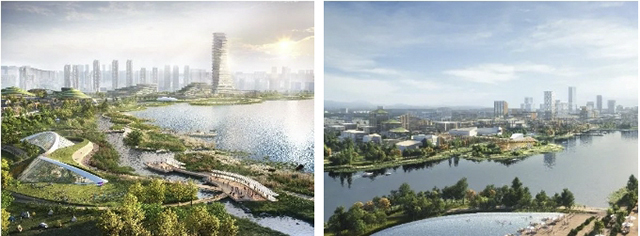
Renderings of the "Strategic Planning and Conceptual Urban Design for Peiyuan Science City" Proposal
In conjunction with the launch meeting for the international solicitation of proposals for the "Strategic Planning and Conceptual Urban Design of Peiyuan Science City," the society specially invited experts and scholars to conduct a special seminar on "Strategic Planning for Urban Innovation Spaces and Regional Collaborative Development." Five distinguished experts-including Wang Jianguo, Sima Xiao, and Zhang Jingxiang- shared insights on the development trends of innovation zones, covering various aspects ranging from theory to practice, from strategic planning to spatial creation for innovation spaces such as science cities and technology parks, and from differentiated development strategies within the integration of the Yangtze River Delta to regional collaboration. Their input inspired design teams and expanded local governments’ understanding of innovation-driven development. The event received positive feedback.
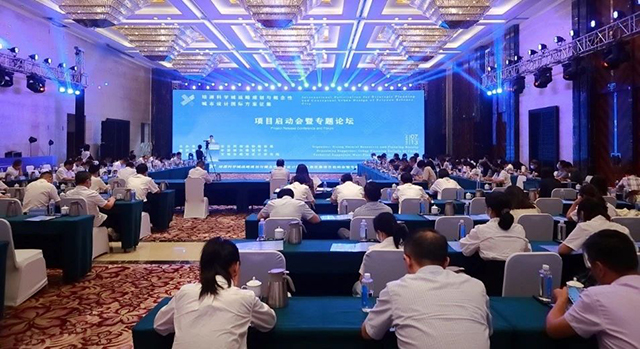
Launch Event and Special Forum for the International Solicitation of Proposals for the "Strategic Planning and Conceptual Urban Design of Peiyuan Science City"
2. Adaptive Processes for Practical Outcomes
Currently, there is no fixed model or unified standard for organizing international planning consultations. Various organizations are still exploring in terms of organizational processes, activity content, team selection, and other aspects. Based on long-term project experience, the society has refined its working mechanisms and processes, continuously exploring and summarizing the optimal organizational model for international consultations according to local needs and project types. During key stages such as announcement publication, institution selection, proposal preparation, and proposal evaluation, the society actively serves as a bridge among the client, consulting institutions, and experts, establishing an efficient organizational support mechanism.
Case Study: Wuxi Chang'an Innovative Future City (Wuxi, Jiangsu)
Relying on the high-quality resources of Taihu Lake and the city's integration strategy, Wuxi City, Jiangsu Province, has developed the Taihu Bay Science and Innovation Belt, successively carrying out a series of planning projects for Liangxi Science and Technology City, Wanshanhu Ecological Science and Technology City, Xiake Bay Science City, and Xiyan Lake Ecological Science and Technology City, initially establishing a city-wide innovation space system.

Renderings of the "Strategic Planning and Urban Design for Wuxi Chang'an Innovative Future City" Proposal
The international consultation activity for the "Strategic Planning and Urban Design for Wuxi Chang'an Innovative Future City," organized and planned by UPSC, attempted to form a concerted effort among experts, public representatives, and participating institutions through an innovative and open model of "gathering global wisdom, building consensus for development, jointly formulating plans, and jointly publishing results," in order to better reach a planning consensus and produce high-quality, in-depth, and locally relevant design proposals.
As part of this innovation system, UPSC tailors consultation workflows to local contexts. For example, in Wuxi’s Changan Innovation Future City project, UPSC introduced a three-stage competition model:
1. Strategic Planning: Global teams proposed visions for innovation ecosystems.
2. Urban Design: Shortlisted teams refined spatial layouts.
3. Implementation Strategies: Finalists developed actionable roadmaps.
Summaries were conducted promptly after each phase, refining consensus and building on past experience, which stimulated the enthusiasm of design institutions to participate in each phase and ensured the quality and depth of the outcomes.
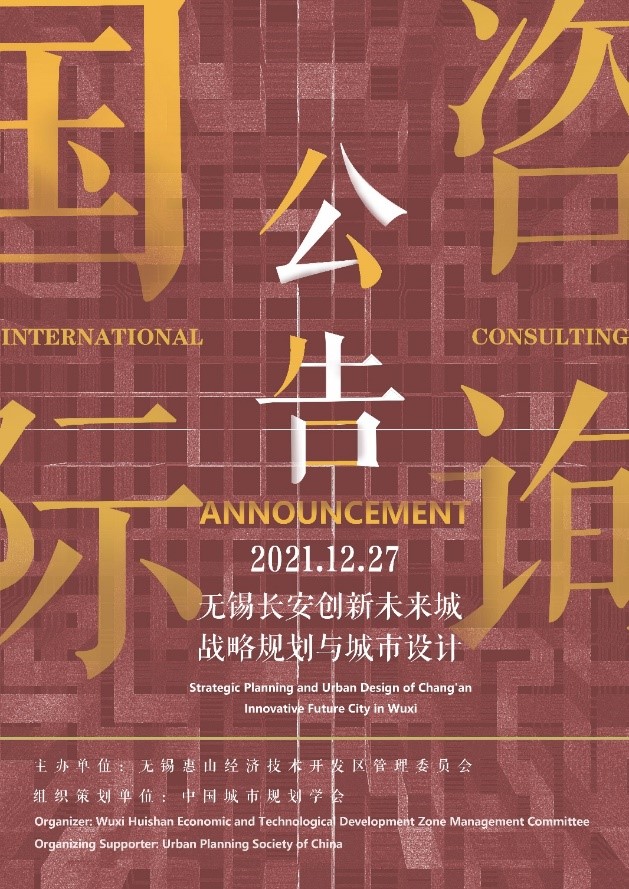
Announcement on International Consulting for Strategic Planning and Urban Design of Chang'an Innovative Future City in Wuxi
3. Public Participation via Multi-Platform Outreach
To attract public engagement in various forms and deepen such engagement, UPSC embody the principle of "cities are built by the people and for the people," demonstrating fairness, justice, and transparency throughout the activity organization process. We provide valuable professional content to further expand the social influence and public participation of international consultation activities. Based on different audience groups, our society amplifies public engagement through media campaigns, online voting, and exhibitions.
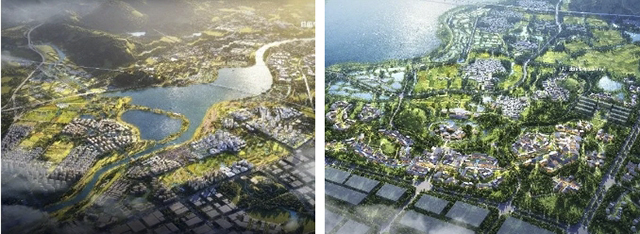
Renderings of the "Conceptual Planning and Urban Design for Shuangjianghu New District, Yiwu City"
Case Study: Shuangjianghu New District (Yiwu, Zhejiang)
In the "Conceptual Planning and Urban Design for Shuangjianghu New District, Yiwu City" project, relying on its influence in the international planning field, the association issued international consultation announcements on its media platforms, attracting nearly a hundred domestic and foreign design institutions to actively respond. After the evaluation meeting, focusing on local characteristics and needs, in addition to promotion on the association's official website, series of official accounts, industry, and local media, event reports were disseminated to approximately 30 national, provincial, and municipal media outlets. Following the scheme evaluation meeting, with support from all parties, various enriching activities showcasing the results were held, including online public voting for schemes and offline exhibitions at the Yiwu Planning Exhibition Hall. The public voting received 10,000+ votes and 3000+ social media shares, and hundreds of citizen comments and likes, with particularly insightful remarks in the comment section, proving that "experts reside among the people." The multifaceted exhibition of results sustained the event's popularity, created a sense of mass participation, collected suggestions and opinions from citizens through multiple channels, providing effective references for government decision-making and enhancing the far-reaching impact of the event.

Event Information Release in Media;Public Participation in Online Voting;Exhibition of Scheme Result Display Boards and Models
04 Bridging Consultations with Regulatory Planning
The international consultation projects organized by UPSC across regions are often significant projects in local urban development and construction. The organization mode of international consultation activities is also recognized by local governments. The evaluation results of the schemes support government decision-making and local development. Some cities will also conduct in-depth discussions and compilations of schemes after the international consultation, providing a basis and guidance for subsequent regulatory plan compilation and other special plans.
Case Study: Core Area of Zidong (Nanjing, Jiangsu)
The association's international consultation on "Urban Design for the Core Area of Zidong, Nanjing" fully draws on the experience of Xiong'an New Area, featuring high standards, a long cycle, high professionalism, and broad content coverage. The consultation outcomes have been deepened and approved by the municipal government. On the one hand, they provide planning basis and technical support for the implementation of major projects. On the other hand, they offer sustainable and cohesive high-level guidance for the compilation of regulatory detailed planning for the core area of Zidong, as well as special plans for rail transit, water systems and vertical planning, traffic impact assessments, and traffic capacity analysis.

Scene of the International Consultation Press Conference;Scene of the Scheme Evaluation Meeting
Conclusion
UPSC continues to lead in integrating global expertise with local needs. By fostering innovation, inclusivity, and practicality, its international consultations elevate urban planning’s role in driving sustainable, high-quality development.
Contributed by: UPSC Advisory Department
Edited by Jiangyu Chen with reference to https://mp.weixin.qq.com/s/Jwrdks1Lugq9JnR45Wwf0w?poc_token=HClevWejasTBefiTHPI-AP6IgPV-zpUT_zDuAIad